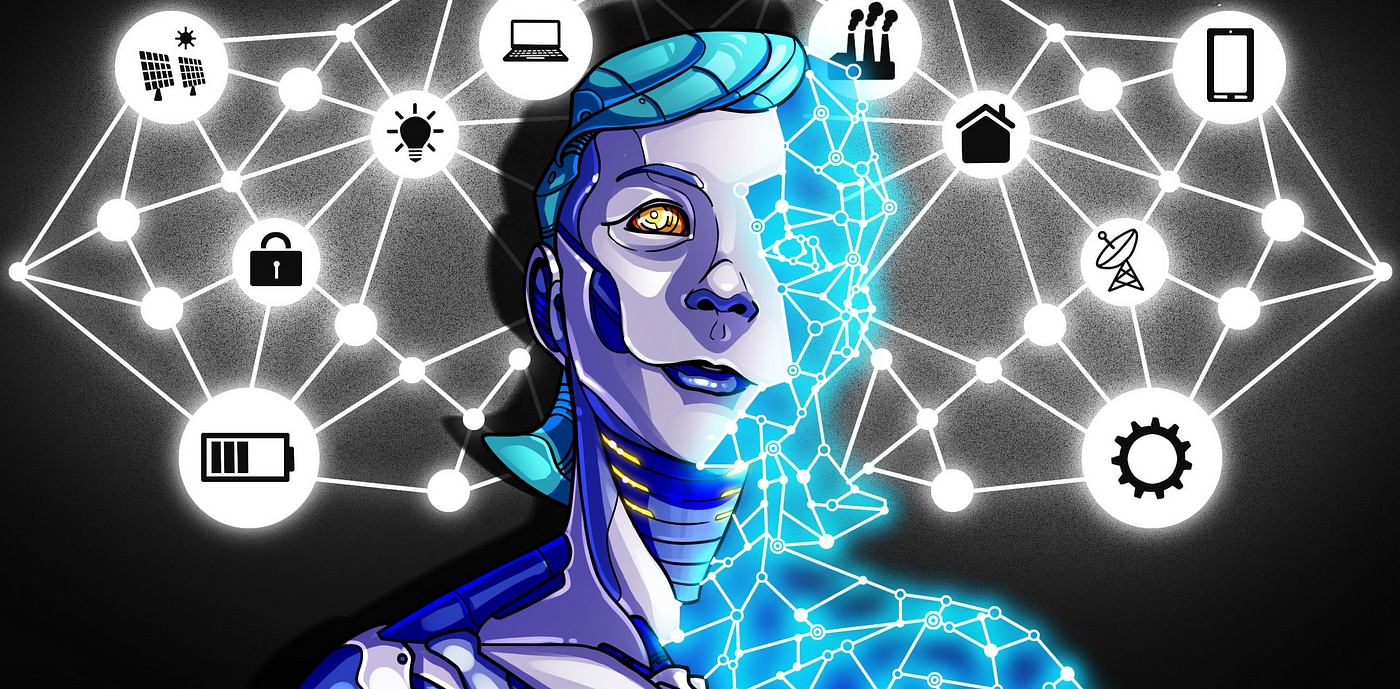Introduction
The convergence of artificial intelligence (AI) and cryptocurrency has ignited a transformative wave across industries, promising unprecedented efficiency, innovation, and financial inclusion. However, the intricate dance between AI and crypto within the realm of regulations has given rise to what can be termed as "regulatory frenemies." While AI and crypto hold the potential to reshape traditional financial systems, their unregulated and decentralized nature has also raised concerns among governments and regulatory bodies. This article explores the dynamic relationship between AI and crypto, shedding light on how they are becoming both allies and adversaries in the realm of regulations.

The Rise of AI and Crypto
Both AI and cryptocurrencies have emerged as revolutionary technologies with the power to disrupt and redefine established systems. AI, with its capabilities in data analysis, predictive modeling, and automation, has found applications across various sectors, ranging from healthcare and finance to manufacturing and customer service. On the other hand, cryptocurrencies, led by Bitcoin, introduced the concept of decentralized digital currency, challenging the traditional notions of monetary transactions and central banking.
Synergies and Advancements
The synergy between AI and cryptocurrencies has been particularly evident in the context of financial technology (fintech) applications. AI-driven algorithms enable real-time trading, portfolio management, and risk assessment, significantly enhancing the efficiency of financial transactions. Crypto trading platforms employ AI to analyze market trends and optimize trading strategies, creating a symbiotic relationship between technology and finance.
Moreover, the potential for AI to mitigate security risks in the crypto space has been recognized. AI algorithms can detect patterns of fraudulent activities, enhance cybersecurity measures, and provide predictive insights into potential threats. This alignment of AI and crypto in bolstering security has the potential to build trust among regulators and institutions.

Regulatory Challenges and Concerns
While the promise of AI and crypto is enticing, their rapid adoption has outpaced regulatory frameworks, giving rise to significant concerns. Cryptocurrencies, designed to operate independently of centralized authorities, have posed challenges for governments aiming to maintain control over financial systems, prevent money laundering, and ensure consumer protection. The decentralized nature of cryptocurrencies clashes with traditional regulatory structures, leading to a complex tussle between innovation and governance.
One of the primary concerns pertains to Know Your Customer (KYC) and Anti-Money Laundering (AML) regulations. Cryptocurrencies provide pseudonymous transactions, allowing users to transact without revealing their identities. This characteristic has made it a favored choice for illicit activities, prompting regulators to grapple with the implementation of effective KYC and AML measures without stifling innovation or privacy rights.
AI-driven financial services also face regulatory challenges. The opacity of AI algorithms raises questions about transparency and accountability. Decisions made by AI algorithms might lack justification and fall outside the scope of traditional regulatory oversight. As AI influences credit scoring, loan approvals, and investment recommendations, ensuring fairness and preventing discriminatory practices becomes a regulatory imperative.
AI and Crypto: Frenemies or Allies?
The relationship between AI and crypto can be characterized as both contentious and collaborative, resulting in a complex interplay between the two. AI technologies could potentially aid in creating more effective regulatory mechanisms for cryptocurrencies. Machine learning algorithms could analyze vast amounts of transaction data to identify suspicious activities, enabling proactive enforcement of AML regulations. Moreover, AI-driven sentiment analysis could gauge market sentiment and predict potential price manipulations, aiding regulators in safeguarding market integrity.
Conversely, AI itself requires regulatory oversight, as its unchecked proliferation could lead to unintended consequences. Clear guidelines are needed to ensure that AI algorithms operate ethically, without perpetuating biases or engaging in predatory practices. In this regard, the crypto community's focus on self-regulation and industry standards could serve as an example for the AI sector.
Global Landscape of Regulation
The regulatory approach towards AI and cryptocurrencies varies significantly across countries. Some nations have embraced these technologies with open arms, fostering innovation through regulatory sandboxes and favorable policies. Others have taken a more cautious stance, highlighting potential risks and imposing strict regulations.
In the crypto space, countries like Switzerland and Singapore have established themselves as blockchain and cryptocurrency hubs by implementing progressive regulations that balance innovation and compliance. These countries provide a conducive environment for blockchain startups to flourish, attracting both talent and investment.
On the other hand, regulatory crackdowns in countries like China have demonstrated the potential for drastic measures against cryptocurrencies. China's ban on cryptocurrency trading and mining sent shockwaves through the crypto community, highlighting the vulnerability of the industry to regulatory shifts.
The Way Forward
As the relationship between AI and crypto continues to evolve, striking the right balance between innovation and regulation remains a challenge. Collaboration between stakeholders—government agencies, financial institutions, tech companies, and consumer advocacy groups—will be pivotal in formulating effective regulatory frameworks that harness the benefits of AI and crypto while safeguarding against potential risks.
- Collaborative Innovation: Governments and industry players should engage in collaborative efforts to develop responsible AI and crypto applications. Regulatory sandboxes can provide a controlled environment for testing new technologies, allowing regulators to understand their implications and iteratively refine regulations.
- Global Harmonization: Given the borderless nature of cryptocurrencies and AI, global cooperation is essential. International standards and agreements can help prevent regulatory arbitrage and ensure consistent enforcement across jurisdictions.
- Education and Awareness: Increasing public awareness about AI and cryptocurrencies is crucial. Educated consumers are better equipped to make informed decisions, while regulators can benefit from a more informed public debate.
- Ethics and Accountability: Developers of AI algorithms and blockchain protocols should prioritize ethics and transparency. Clear guidelines for responsible AI and crypto development can help build trust and mitigate regulatory concerns.
Conclusion
The complex dance between AI and cryptocurrencies within the regulatory landscape exemplifies the notion of "frenemies" in technology. The potential for transformative innovation coexists with challenges related to privacy, security, and regulatory compliance. The evolution of this relationship will determine whether AI and crypto become allies in reshaping financial systems or adversaries in a clash between innovation and governance. Striking the right balance requires collaboration, adaptability, and a shared vision of responsible technological advancement.
Hope this article was helpful to you and help you in gaining some knowledge. Comment Below and give some feedback
Also Read: Related New Latest Gadget’s by Clicking Here. Related Health and Fitness by Clicking Here. Get unlimited coupons click here. For Yoga Tips Click here. Check out latest movies and web series from Here Want gadget info? Click Here. Please don' forget to Bookmark This site and get back Again. We keep on Adding everyday new Contents. So Please don't forget to Subscribe our News Letter. If you are interested in cooking, check out our cooking section by clicking Hereor Here
Don't Forget to Share this topic with your Friends. You can just share this on Facebook, Twitter and You can also E-Mail.
Please don' forget to Bookmark This site and get back Again. We keep on Adding everyday new Contents. So Please don't forget to Subscribe our News Letter. If you are interested in cooking, check out our cooking section by clicking Hereor Here



0 Comments